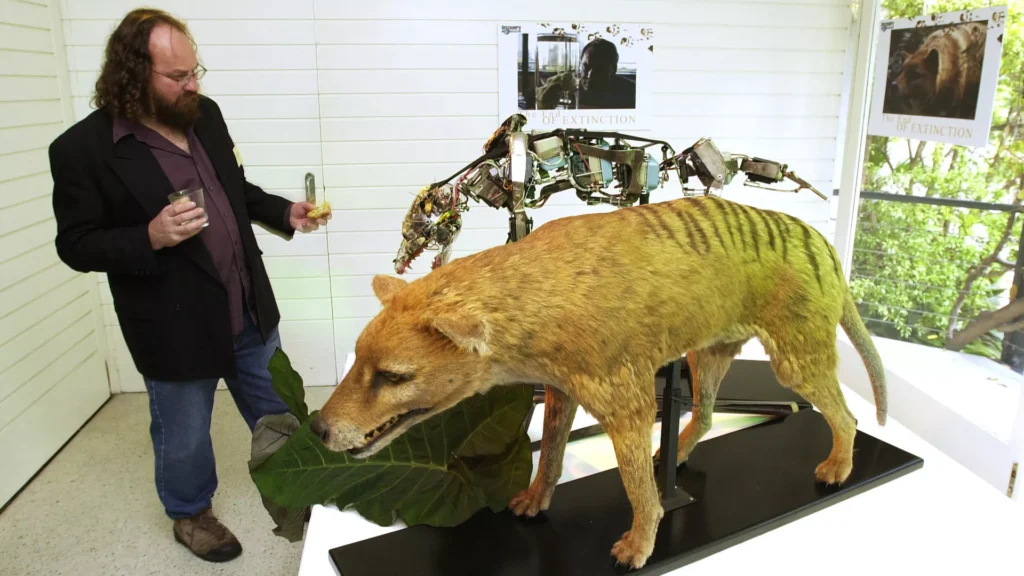Breakthrough in Genetic Research Offers Hope for De-Extinction and Conservation.
In a remarkable leap forward in genetic research, scientists have successfully isolated RNA from a 132-year-old Tasmanian Tiger specimen, reigniting hope for the resurrection of this long-extinct marsupial. The findings, published in the journal Genome Research, have the potential to revolutionize our understanding of extinct species’ genetic makeup and the possibility of bringing them back to life.
The Tasmanian Tiger, or thylacine, once roamed the islands of New Guinea and Tasmania as a carnivorous marsupial. However, their presence posed a perceived threat to local livestock in the 19th century, leading to a relentless bounty hunting campaign that drove them to the brink of extinction. Tragically, the last known Tasmanian Tiger perished in captivity in 1936.

This pioneering study has unveiled a treasure trove of information by isolating millions of RNA sequences from the ancient specimen, which had been stored at room temperature. These sequences provide scientists with an unprecedented level of insight into the thylacine’s genetic code and the intricate mechanisms behind protein production throughout its body. While the resurrection of the Tasmanian Tiger remains speculative, this groundbreaking achievement opens the door to the potential revival of other extinct species through advanced genetic techniques.
As researchers dive deeper into the genetic mysteries of extinct creatures, this discovery holds immense promise for both conservation efforts and our comprehension of long-lost species. Yet, it also ushers in ethical quandaries surrounding de-extinction and the responsibilities we bear in safeguarding endangered species.

The potential return of the Tasmanian Tiger from the annals of extinction is a testament to the boundless possibilities of science and humanity’s enduring commitment to the preservation of Earth’s unique biodiversity. This breakthrough reaffirms our role as stewards of the natural world and sparks a renewed conversation about the future of species on the brink of vanishing forever.
Resources:
2.https://studyfinds.org/tasmanian-tiger-rna-extinct-rna/
3.https://www.heypoorplayer.com/2023/09/26/ty-the-tasmanian-tiger-4-bush-rescue-returns-review-switch/
4.https://www.cbsnews.com/news/scientists-hope-to-revive-tasmanian-tiger-from-extinction/
5.https://www.livescience.com/thylacine-de-extinction